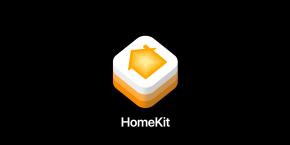
As regular readers know, I’m a huge fan of smart home tech. But there’s a trend we’re increasingly seeing with this and other technology where we never fully own the product.
That’s true in a couple of ways, and there’s both an upside and downside to that – each illustrated by a different story I spotted this morning …
Perhaps the most financially extreme example of not fully owning our own products is the business model used by Tesla, where your car has capabilities that can only be unlocked by paying expensive one-off or subscription fees. Other companies are following Tesla’s example in charging extra for things as ridiculous as letting you use the full capacity of the batteries you supposedly own.
With smart home tech, there are a couple of ways that companies can change the feature set of your product after you’ve bought it. The first is firmware updates.
Generally, firmware updates add, rather than remove, functionality. We’ve seen this with HomeKit, where companies have initially launched products without HomeKit support, and then later (often much later than promised) upgraded the firmware to add this.
Upside: Additional functionality
One positive example I read this morning was iRobot announcing plans for its products to run on the company’s own operating system, iRobot OS. The company already added new features to existing Roomba cleaners via a firmware update in March, which included support for Siri Shortcuts. But having a common OS for a range of smart home products will enable it to go further, as The Verge explains.
Angle says the new OS will allow iRobot to develop a more complete understanding of the home and leverage that to extend to other areas of the smart home. While today the OS will run on the robots, Angle says it will soon run on other devices, too. That includes air purifiers from Aeris, a company iRobot purchased last year. “There is a cloud-based home understanding; we call it the home knowledge cloud. Other iRobot OS devices could have access to it, and through this shared understanding of the home, know how they’re supposed to operate,” says Angle.
He explained that the air purifier could automatically know which room it was in using the iRobot OS cloud. “It would benefit from the knowledge that ‘I’m in the kitchen. It’s okay to make more noise. And there are a lot of sources of pollutants here.’ Compared to its role in a bedroom, which would be different.” He added that air purifiers, like robot vacuums, often get disabled by the user because they’re too noisy.
Angle says iRobot is working on allowing its air purifiers to understand when a room or home is empty and go into turbo mode, then revert to quiet when you come back. “The idea is an operating system focused on not just activating the features on the robot but doing so in harmony with what’s going on in the home.”
Downside: Smart home tech remotely killed
But just as companies can add features, they can also take them away. This is especially true of products that rely on connecting to a server run by the company. Case in point: today’s announcement that Amazon is shutting down Cloud Cam.
With your help over the last five years, Cloud Cam has served as a reliable indoor security camera and a hub for Amazon Key-compatible smart locks that work with Alexa. As the number of Alexa smart home devices continues to grow, we are focusing efforts on Ring, Blink, and other technologies that make your home smarter and simplify your everyday routines. Therefore, we have decided to no longer continue support for Amazon Cloud Cam and its companion apps.
What this means for you: On December 2, 2022, you will no longer be able to use your Cloud Cam device or its companion apps. Until then, you will be able to download any video recordings if available. All video history will be deleted on December 2, 2022.
Now, Amazon is handling this reasonably well, as Engadget reported.
Amazon will offer owners a free Blink Mini security camera and a one-year subscription to the higher-end Blink Subscription Plus service (normally $100 per year) before Cloud Cam functionality ends on December 2nd. Key Edition owners will also get a fourth-generation Echo speaker.
But that’s not necessarily a good deal for all. At the end of the free one-year subscription, owners will have to pay $30/year for features they previously had free of charge (like motion-based recording, which is a pretty basic feature for any security camera). Additionally, some owners used their Cloud Cam as a Zigbee hub, to connect to smart locks, and their replacement camera won’t offer this capability.
Companies can even hold customers for ransom by withdrawing all functionality unless they pay for a subscription.
The hard reality: We don’t get a say
We could ask: Is this a price worth paying? Does the upsides of gaining functionality after purchase outweigh the risk of losing access to features we paid for – and ultimately the possibility of a piece of smart home tech turning into a paperweight?
But ultimately the question is academic: As far as smart home tech is concerned, it’s the nature of the beast. Any product that relies on server functionality is at risk of ceasing to work.
It’s also an inherent risk of technology generally – ask anyone who previously relied on any of the products in the Google graveyard.
Do these risks factor into your purchase decisions? Please let us know your thoughts in the comments.
Photo: R Architecture/Unsplash
FTC: We use income earning auto affiliate links. More.





Comments